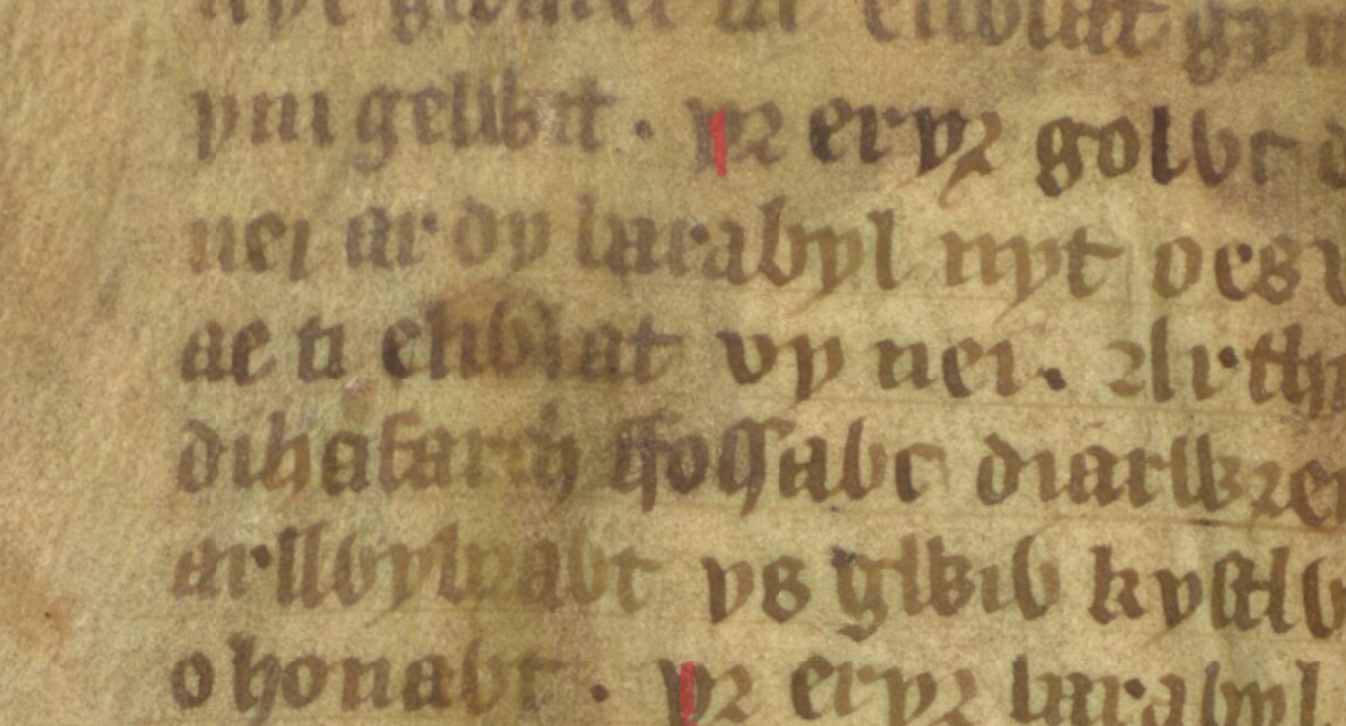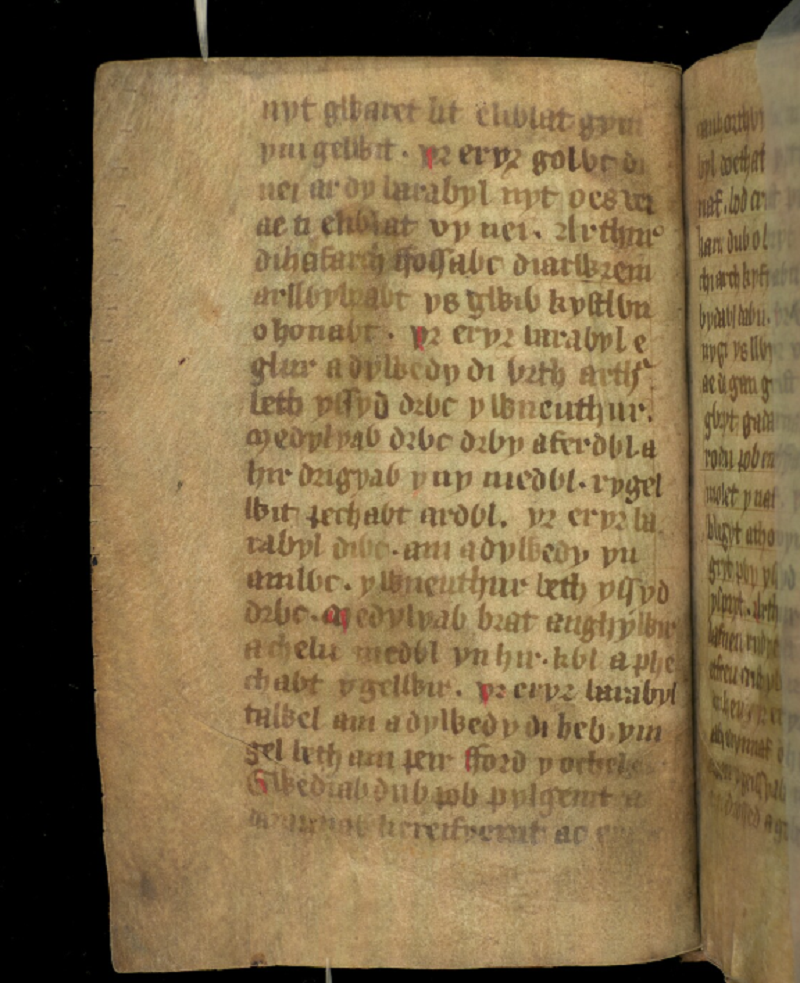Eliwlod, Nephew of King Arthur
Eliwlod is a minor character in the Arthurian legends who is known only from a few Welsh sources. Despite this minor role, he was closely related to King Arthur, being his nephew. He also receives some notable praise and is assigned certain special abilities. In this article, we will closely examine everything that we know about this obscure figure.
Who Was Eliwlod?
Eliwlod was the nephew of King Arthur in Welsh tradition. He was the son of Madoc, son of Uthyr Pendragon. Hence, he was the nephew of Arthur through Arthur’s brother.
Not much is known about Eliwlod, since he only appears in a few sources. He does not seem to feature at all in non-Welsh sources. Nonetheless, it is likely that he originally had much more prominence in Welsh Arthurian tradition than the few sources in which he appears now would superficially suggest.
The references to him suggest that he had a close relationship with Arthur. He is even referred to as his ‘beloved nephew’. Furthermore, he is shown to have been one of the men of Arthur’s court. He is also shown to have shapeshifting abilities, which is something that other members of Arthur’s family have in Welsh tradition.
Name
The name of this figure appears in various different forms in the available records. The form commonly used by modern sources is ‘Eliwlod’, but ‘Eliwlad’ is sometimes used. For instance, this is the form used by Rachel Bromwich in her Trioedd Ynys Prydain.
It appears that the oldest attested form of his name is ‘Eliwlat’, hence the form used by Bromwich.
In later texts, such as in references to him by medieval Welsh poets, the name appears as ‘Lliwlod’ or ‘Liwlod’.
Family
Let us look more closely at Eliwlod’s family as revealed in Welsh tradition. Since he was a close relative of Arthur, we know quite a lot about his family.
Father
Eliwlod’s father, as already mentioned, was Madoc. He was the son of King Uthyr Pendragon and thus the brother of King Arthur.
This Madoc is ostensibly even more obscure than his son. However, this is likely because he appears in several records without being explicitly identified as the son of Uthyr.
For example, based on geography and chronology, it is likely that Eliwlod’s father Madoc can be identified as the patron saint of several churches in South Wales. He can also likely be identified as the Maidoc of the Life of St Teilo.
There is also evidence that Madoc can be identified as figure who is usually recorded as ‘Morfryn’. In some records, this name appears as ‘Madoc Morfryn’. He was an important prince of South Wales, which supports the conclusion that he should be identified as Madoc the brother of King Arthur.
Siblings
If the identification of Madoc ap Uthyr with Madoc Morfryn is correct, as it does appear to be, then this means that Eliwlod had at least two siblings. One of them was Myrddin Wyllt, the famous bard who became known in the Arthurian legends as Merlin.
Myrddin is recorded as having a sister, who would naturally also be the sister of Eliwlod. Her name was Gwenddydd. Both Myrddin and his sister Gwenddydd went on to appear in non-Welsh Arthurian tales, while Eliwlod did not.
Mother
The mother of Eliwlod is unknown. We can presume that his father, Madoc, would have married a princess from a neighbouring kingdom, or from a kingdom which was in an alliance with Arthur’s kingdom.
By way of comparison, King Arthur himself is recorded as having three wives. One of them was a princess from Brittany (allied to Arthur); another was a princess within Arthur’s own territory; and another was a princess from Powys, a neighbouring kingdom.
Therefore, we can assume that Arthur’s brother likely followed the same pattern, marrying someone from a neighbouring or allied kingdom. The only hint that Eliwlod’s mother might have been from further afield is the fact that there is some evidence that Madoc was a sailor. Thus, it is within the realms of plausibility that he could have travelled quite far before deciding to marry.
Uncles and Aunts
Given that Eliwlod was the grandson of Uthyr Pendragon, he had several prominent aunts and uncles. These were the brothers and sisters of Madoc.
Notable examples include King Arthur, Gwyar, and Anna. Including aunts and uncles by marriage, Eliwlod was also nephew to King Lot of Lothian, King Urien Rheged, and Arthur’s three queens all named Gwenhwyfar.
Eliwlod in the Welsh Texts
Eliwlod appears in several different sources. Some of them are just minor references, but one of them is far more substantial than the others.
Arthur and the Eagle
The main text in which Eliwlod appears is a Welsh poem known as Arthur and the Eagle. This is believed to date to about the same time as the composition of Culhwch and Olwen, or about 1100.
In this poem, Eliwlod appears to Arthur in the form of an eagle and converses with him at length. The ability to shapeshift is not unique to Eliwlod in Welsh tradition. A number of other figures from the Arthurian era are portrayed as having this ability, including Uthyr Pendragon.
This conversation takes place in the Vale of Coed Cernyw. This is almost certainly the present-day Coedkernew in Gwent, southeast Wales.
In this lengthy poem, as Arthur and his nephew converse, Arthur does not initially realise that it is Eliwlod. He thinks that it is simply a remarkable vision of an eagle. As the conversation progresses, the eagle claims to be Eliwlod.
Arthur remarks that Eliwlod is dead. Thus, it is evident that it is Eliwlod’s spirit appearing to him in the form of an eagle.
The two then converse about life and death, and how death can be avoided. Eliwlod assures Arthur that death is unavoidable, but he can avoid Hell by being righteous in God’s eyes. Arthur declares himself mighty, but Eliwlod declares that only God is mighty.
Arthur’s role in this conversation is very much that of a king whose mindset is more fleshly than spiritual. Eliwlod takes the role of an advisor who moulds Arthur’s attitude (or attempts to, at least) to be more focused on religion than on power and prestige in the world.
Eliwlod in the Welsh Triads
Eliwlod has an appearance in the Welsh Triads. This is a large collection of medieval traditions organised into groups of threes. Eliwlod appears in a section known as Appendix IV, also known as The Twenty-Four Knights of Arthur’s Court.
The first of these triads is entitled ‘Three Golden-Tongued Knights were in Arthur’s Court’. The third of these three is listed as Eliwlod son of Madoc son of Uthyr. About these three, the triad says:
“There was neither king nor lord to whom those came who did not listen to them; and whatever quest they sought, they wished for and obtained it, either willingly or unwillingly.”
According to this, Eliwlod was exceptionally skilled at speech. He was able to use this to acquire whatever he wanted.
This is consistent with what is shown of Eliwlod in the poem Arthur and the Eagle. The very fact that Eliwlod is presented as educating Arthur is significant. Furthermore, Arthur refers to Eliwlod’s excellent speech.
In one place, Arthur refers to Eliwlod as being ‘gentle in discourse’. In another, he refers to him as being ‘not poor of speech’. He goes on to describe Eliwlod as being ‘of gracious speech’, ‘of intricate speech’, and many other variations. The point is clear. Eliwlod certainly was ‘Golden-Tongued’, just as he is described in the Welsh Triads.
Minor References to Eliwlod
These two sources constitute the primary sources for Eliwlod. However, he is mentioned in a variety of later sources, mostly poetry.
For example, Bleddyn Fardd, a Welsh bard of the thirteenth century, made a passing reference to Eliwlod. Tudur Aled, a fifteenth century Welsh bard, compared a certain hawk to Eliwlod, evidently a reference to the tradition of this legendary figure becoming an eagle.
Eliwlod as Lancelot
An interesting theory about Eliwlod that was proposed some time ago is that he does, in fact, appear in non-Welsh Arthurian tales. This theory connects him to the figure of Lancelot. It was Thomas Gwynn Jones, a Welsh scholar of the early twentieth century, who argued in favour of this connection.
According to T Gwynn Jones, the early form ‘Eliwlat’ could have evolved into ‘Elyflath’. This, in turn, could have evolved into ‘Lancelot’. What he wrote about it was:
“A Welsh form of Lancelot is Eliwlad, which may be, in modern pronunciation and spelling, Elyflath, of which Lancelot is a kind of rendering.”
While the first of these two evolutions is not too implausible, the second is clearly quite a jump. There is no real justification provided for this connection.
Additionally, there is no connection between the two figures when we look at their familial relationships or their reported activities. Lancelot never takes the role of Eliwlod in any of the medieval tales. There is no trace of the story of Eliwlod appearing to Arthur as an eagle in the stories of Lancelot.
Lancelot’s father bears no relation to Madoc, the father of Eliwlod and brother of King Arthur. There is simply no basis whatsoever for associating the two figures. Therefore, the theory that the name ‘Eliwlod’ has anything to do with ‘Lancelot’ can be soundly rejected.
Conclusion
In conclusion, Eliwlod was the nephew of King Arthur, being the son of Madoc ap Uthyr. He was known as being ‘Golden-Tongued’, referring to the fact that he was very skilled in speech and was able to use this skill to influence others and get his own way.
It is likely that Eliwlod’s father Madoc was identical to a figure named Morfryn, making Eliwlod the brother of Myrddin Wyllt and Gwenddydd. His one major appearance in Welsh records is in a poem in which he appears to Arthur in the form of an eagle and teaches him that death is unavoidable.
Sources
Bartrum, Peter, A Welsh Classical Dictionary, 1993
Bromwich, Rachel, Trioedd Ynys Prydein: The Triads of the Island of Britain, 2014
Jones, Nerys Anna, Arthur in Early Welsh Poetry, 2019
Howells, Caleb, King Arthur: The Man Who Conquered Europe, 2019
Johnson, Flint, Origins of Arthurian Romances: Early Sources for the Legends of Tristan, the Grail and the Abduction of the Queen, 2012


